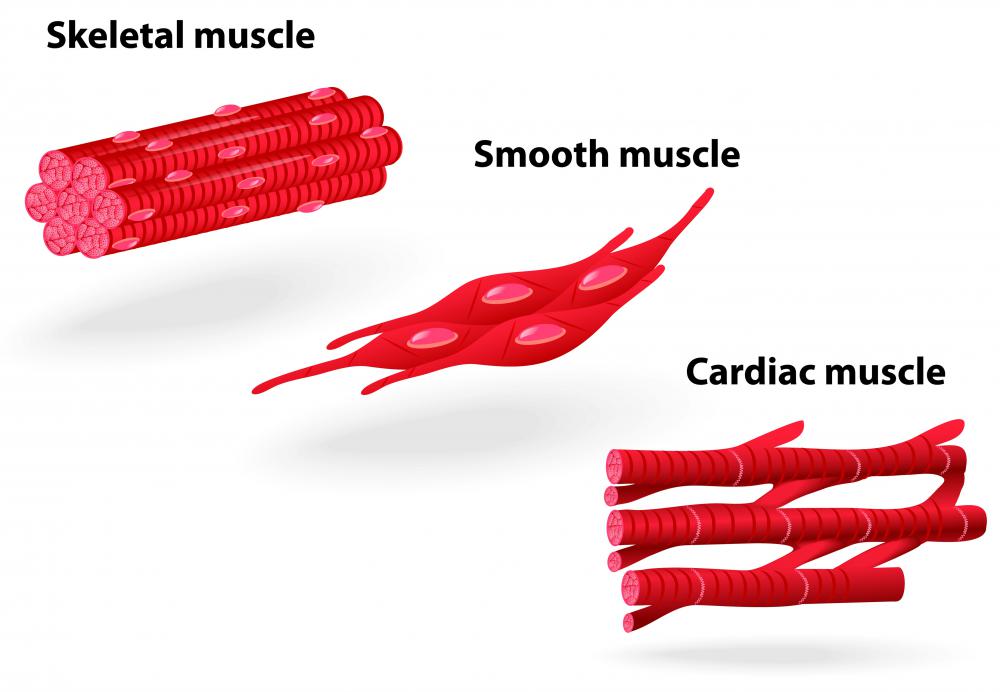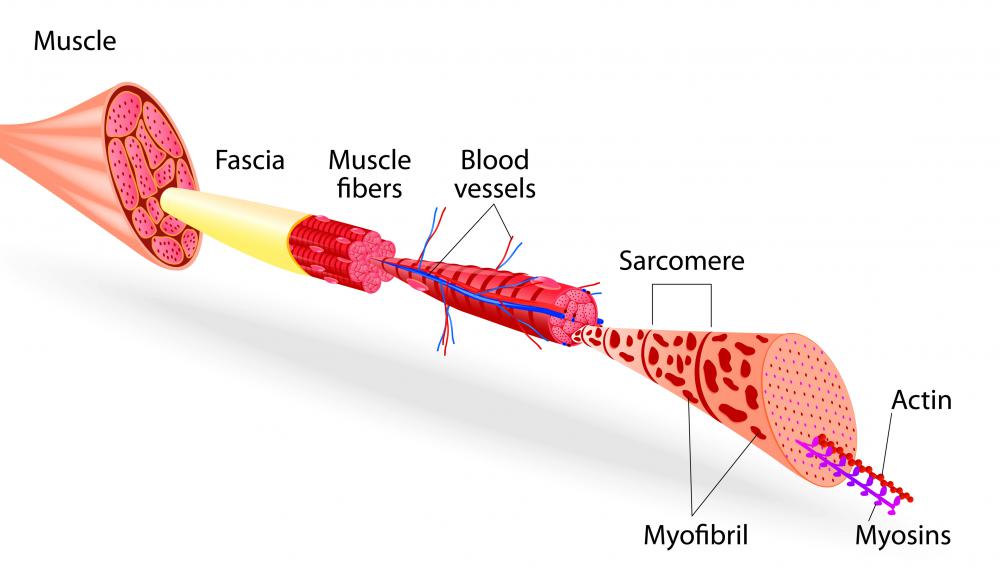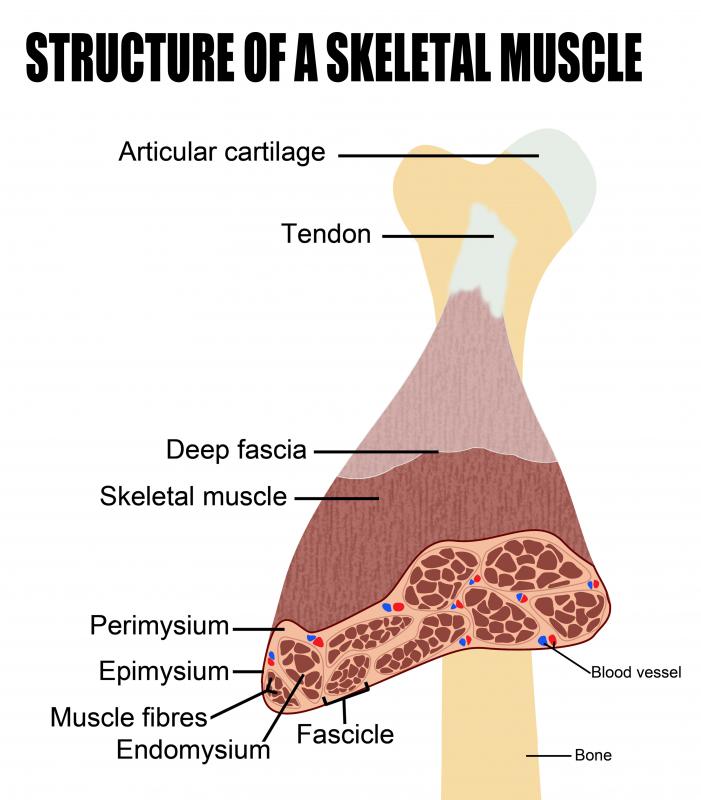At TheHealthBoard, we're committed to delivering accurate, trustworthy information. Our expert-authored content is rigorously fact-checked and sourced from credible authorities. Discover how we uphold the highest standards in providing you with reliable knowledge.
What Are the Functions of Skeletal Muscles?
Physical movement of the human body is one of the many functions of skeletal muscles. Some of the movements skeletal muscles are responsible for include smiling, lifting, and sitting. Opposing gravity and providing stability represent additional functions of skeletal muscles.
The muscles of the human body are divided into three different types and these include cardiac, smooth, and skeletal. Skeletal muscles consist of skeletal muscle tissue and typically connect to bones with the help of tendons. This allows for a synchronized movement of several body parts to create the intended movement and action.

Smiling, frowning, and lifting the eyebrows are just some of the functions of skeletal muscles in the face. Unlike those in other parts of the human body, facial muscles attach to the skin and not directly to the bones of the skull. This allows facial muscles to make a wide range of movements, creating everything from slight to dramatic expressions.

Other muscles of the human body allow for movements related to lifting, pushing, and pulling. These actions are performed by skeletal muscles of the leg — such as the quadriceps, gastrocnemius, and hamstring — and arm, which includes the bicep and tricep. Additionally, abdominal muscles and muscles in the back help stabilize the core of the body while completing a lifting, pushing, or pulling actions. Muscles commonly involved in these movements include the deltoid, pectoral, and external oblique.

Providing the ability to sit represents another one of the many functions of skeletal muscles. Leg and abdominal muscles, referred to as rectus abdominus in anatomy courses and books, provide the movements required for the motion of sitting. In addition, the gluteus maximus provides some cushion for sitting.
Working against gravity to help with posture and mobilization represent additional functions of skeletal muscles throughout the body. These muscles, referred to as postural muscles, include the muscles along the spine, down the legs, and in the ankles. In addition to providing needed strength for movements and actions, these skeletal muscles help with stabilizing the frame of the human body throughout a variety of movements, including standing up and walking.

Skeletal muscles are also responsible for other functions of the human body. For instance, the diaphragm is involved in breathing, a vital function. Located in the chest, the diaphragm muscle also assists with sneezing, coughing, and laughing. Some muscles function on an almost continual basis, such as those in the neck. The trapezius, scalenus medius, and scalenus anterior all work together to support and make movements of the head and neck.
AS FEATURED ON:
AS FEATURED ON:
















Discuss this Article
Post your comments